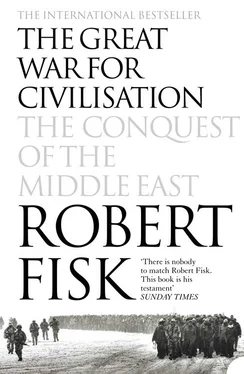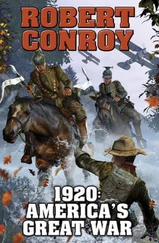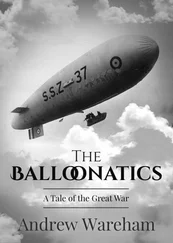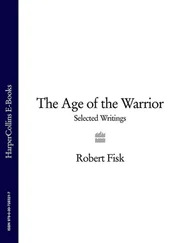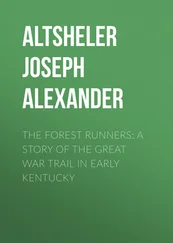In Kabul, the doors were closing. All American journalists were expelled from the country. An Afghan politburo statement denounced British and other European reporters for ‘mudslinging’. The secret police had paid Mr Samadali a visit. Gavin was waiting for me, grim-faced, in the lobby. ‘They told him they’d take his children from him if he took us outside Kabul again,’ he said. We found Mr Samadali in the hotel taxi line-up next day, smiling apologetically and almost in tears. My visa was about to expire but I had a plan. If I travelled in Ali’s bus all the way to Peshawar in Pakistan, I might be able to turn round and drive back across the Afghan border on the Khyber Pass before the Kabul government stopped issuing visas to British journalists. There was more chance that officials at a land frontier post would let me back into Afghanistan than the policemen at the airport in Kabul.
So I took the bus back down the Kabul Gorge, this time staying aboard as we passed through Jalalabad. It was an odd feeling to cross the Durand Line and to find myself in a Pakistan that felt free, almost democratic, after the tension and dangers of Afghanistan. I admired the great plumes on the headdress of the soldiers of the Khyber Rifles on the Pakistani side of the border, the first symbol of the old British raj, a regiment formed 101 years before, still ensconced at Fort Shagai with old English silver and a visitor’s book that went back to the viceroys.
But of course, it was an illusion. President General Mohamed Zia ul-Haq ran an increasingly Islamic dictatorship in which maiming and whipping had become official state punishments. He ruled by martial law and had hanged his only rival, the former president Zulfikar Ali Bhutto, less than a year earlier, in April 1979. And of course, he responded to the Soviet invasion of Afghanistan with publicly expressed fears that the Russian army planned to drive on into Pakistan. The United States immediately sent millions of dollars of weapons to the Pakistani dictator, who suddenly became a vital American ‘asset’ in the war against communism.
But in Ali’s wooden bus, it seemed like freedom. And as we descended the splendour of the Khyber Pass, there around me were the relics of the old British regiments who had fought on this ground for more than a century and a half, often against the Pathan ghazi fighters with their primitive jezail rifles. ‘A weird, uncanny place… a deadly valley,’ a British writer called it in 1897, and there on the great rocks that slid past Ali’s bus were the regimental crests of the 40th Foot, the Leicestershires, the Dorsetshires, the Cheshires – Bill Fisk’s regiment before he was sent to France in 1918 – and the 54th Sikh Frontier Force, each with its motto and dates of service. The paint was flaking off the ornamental crest of the 2nd Battalion, the Baluch Regiment, and the South Lancs and the Prince of Wales’ Volunteers had long ago lost their colours. Pathan tribesmen, Muslims to a man of course, had smashed part of the insignia of a Hindi regiment whose crest included a proud peacock. Graffiti covered the plaque of the 17th Leicestershires (1878–9). The only refurbished memorial belonged to Queen Victoria’s Own Corps of Guides, a mainly Pathan unit whose eccentric commander insisted that they be clothed in khaki rather than scarlet and one of whose Indian members probably inspired Rudyard Kipling’s ‘Gunga Din’. The lettering had been newly painted, the stone washed clean of graffiti.
Peshawar was a great heaving city of smog, exhaust, flaming jacaranda trees, vast lawns and barracks. In the dingy Intercontinental there, I found a clutch of telex operators, all enriched by The Times and now further rewarded for their loyalty in sending my reports to London. This was not just generosity on my part; if I could re-enter Afghanistan, they would be my future lifeline to the paper. So would Ali. We sat on the lawn of the hotel, taking tea raj-style with a large china pot and a plate of scones and a fleet of huge birds that swooped from the trees to snatch at our cakes. ‘The Russians are not going to leave, Mr Robert,’ Ali assured me. ‘I fear this war will last a long time. That is why the Arabs are here.’ Arabs? Again, I hear about Arabs. No, Ali didn’t know where they were in Peshawar but an office had been opened in the city. General Zia had ordered Pakistan’s embassies across the Muslim world to issue visas to anyone who wished to fight the Soviet army in Afghanistan.
A clutch of telexes was waiting for me at reception. The Times had safely received every paragraph I had written. *I bought the London papers and drank them down as greedily as any gin and tonic. The doorman wore a massive imperial scarlet cummerbund, and on the wall by the telex room I found Kipling’s public school lament for his dead countrymen – from ‘Arithmetic on the Frontier’ – framed by the Pakistani hotel manager:
A scrimmage in a border station –
A canter down some dark defile –
Two thousand pounds of education
Drops to a ten-rupee jezail –
CHAPTER THREE
The Choirs of Kandahar
No one spoke of hatred of the Russians, as the feeling experienced … from the youngest to the oldest, was stronger than hatred. It was not hatred, for they did not regard dogs as human beings, but it was such repulsion, disgust and perplexity at the senseless cruelty of these creatures …
LEO TOLSTOY, Haji Murat
The ghosts of British rule seemed to haunt Peshawar. In the bookshops, I found a hundred reprints of gazetteers and English memoirs. Sir Robert Warburton’s Eighteen Years in the Khyber stood next to Woosnam Mills’s yarns; ‘Noble conduct of our sepoys’, ‘Immolation of 21 Sikhs’ and ‘How British officers die’. Further volumes recalled the exploits of Sir Bindon Blood, one of whose young subalterns, Winston Churchill, was himself ambushed by Pathans in the Malakand hills to the north of Peshawar. *Not only ghosts frequented Peshawar. Unlike the Russian occupiers of Afghanistan, the British could not take their dead home; and on the edge of Peshawar, there still lay an old British cemetery whose elaborate tombstones of florid, overconfident prose told the story of empire.
Take Major Robert Roy Adams of Her Majesty’s Indian Staff Corps, formerly deputy commissioner of the Punjab. He lay now beside the Khyber Road, a canyon of traffic and protesting donkeys whose din vibrated against the cemetery wall. According to the inscription on his grave, Major Adams was called to Peshawar ‘as an officer of rare capacity for a frontier. Wise, just and courageous, in all things faithful, he came only to die at his post, struck down by the hand of an assassin.’ He was killed on 22 January 1865, but there are no clues as to why he was murdered. Nor are there any explanations on the other gravestones. In 1897, for example, John Sperrin Ross met a similar fate, ‘assassinated by a fanatic in Peshawar City on Jubilee Day’. A few feet from Ross’s grave lay Bandsman Charles Leighton of the First Battalion, The Hampshire Regiment, ‘assassinated by a Ghazi at this station on Good Friday’. Perhaps politics was left behind at death, although it was impossible to avoid the similarity between these outraged headstones and the language of the Soviet government. The great-grandsons of the Afghan tribesmen who killed the British were now condemned by the Kremlin as ‘fanatics’ – or terrorists – by Radio Moscow. One empire, it seemed, spoke much like another.
To be fair, the British did place their dead in some historical context. Beneath a squad of rosewood trees with their bazaar of tropical birds lay Privates Hayes, Macleod, Savage and Dawes, who ‘died at Peshawar during the frontier disturbances 1897–98’. Not far away was Lieutenant Bishop, ‘killed in action at Shubkudder in an engagement with the hill tribes, 1863’. He was aged twenty-two. Lieutenant John Lindley Godley of the 24th Rifle Brigade, temporarily attached to the 266th Machine Gun Company, met the same end at Kacha Garhi in 1919.
Читать дальше
